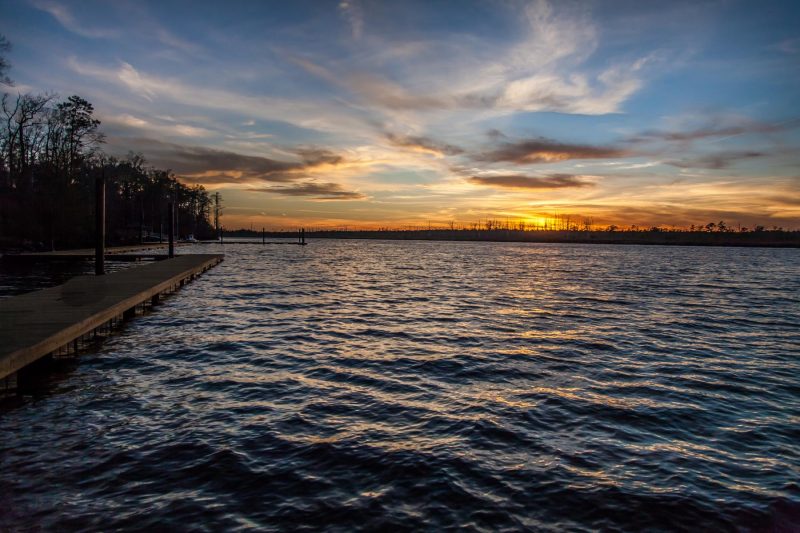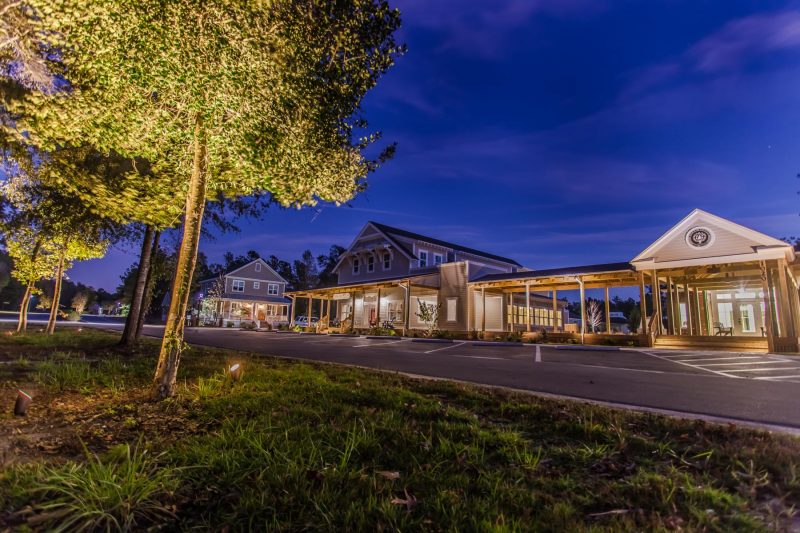Calling all stargazers! Our new Riverwalk is the perfect place to look up and admire the stars each night this summer along the Northeast Cape Fear River. Clear nights with little to no clouds or during new moon cycles are the best times to observe the twinkling of stars above.

River Bluffs is 10 minutes NORTH of Downtown Wilmington along the Cape Fear River. Just outside the city, our location is the perfect spot for stargazing.
Summer 2017 Key Dates & Celestial Events
From full moons and meteor showers to planetary sightings and solar eclipses, there is plenty to observe from the River Bluffs Riverwalk this summer! Here’s a handy event list for stargazing all summer long:
- June 21 - June Solstice. The June solstice occurs at 04:24 UTC. The North Pole of the earth will be tilted toward the Sun, which will have reached its northernmost position in the sky and will be directly over the Tropic of Cancer at 23.44 degrees north latitude. This is the first day of summer (summer solstice) in the Northern Hemisphere and the first day of winter (winter solstice) in the Southern Hemisphere.
- June 24 - New Moon. The Moon will be located on the same side of the Earth as the Sun and will not be visible in the night sky. This phase occurs at 02:31 UTC. This is the best time of the month to observe faint objects such as galaxies and star clusters because there is no moonlight to interfere.
- July 9 - Full Moon. The Moon will be located on the opposite side of the Earth as the Sun and its face will be will be fully illuminated. This phase occurs at 04:07 UTC. This full moon was known by early Native American tribes as the Full Buck Moon because the male buck deer would begin to grow their new antlers at this time of year. This moon has also been known as the Full Thunder Moon and the Full Hay Moon.
- July 23 - New Moon. The Moon will be located on the same side of the Earth as the Sun and will not be visible in the night sky. This phase occurs at 09:46 UTC. This is the best time of the month to observe faint objects such as galaxies and star clusters because there is no moonlight to interfere.
- July 29, 30 - Delta Aquarids Meteor Shower. The Delta Aquarids is an average shower that can produce up to 20 meteors per hour at its peak. It is produced by debris left behind by comets Marsden and Kracht. The shower runs annually from July 12 to August 23. It peaks this year on the night of July 29 and morning of July 30. The crescent moon will set by midnight, leaving dark skies for what should be a good early morning show. Best viewing will be from a dark location after midnight. Meteors will radiate from the constellation Aquarius,\ but can appear anywhere in the sky.
- July 30 - Mercury at Greatest Eastern Elongation. The planet Mercury reaches greatest eastern elongation of 27.2 degrees from the Sun. This is the best time to view Mercury since it will be at its highest point above the horizon in the evening sky. Look for the planet low in the western sky just after sunset.
- August 7 - Full Moon. The Moon will be located on the opposite side of the Earth as the Sun and its face will be will be fully illuminated. This phase occurs at 18:11 UTC. This full moon was known by early Native American tribes as the Full Sturgeon Moon because the large sturgeon fish of the Great Lakes and other major lakes were more easily caught at this time of year. This moon has also been known as the Green Corn Moon and the Grain Moon.
- August 7 - Partial Lunar Eclipse. A partial lunar eclipse occurs when the Moon passes through the Earth’s partial shadow or penumbra, and only a portion of it passes through the darkest shadow, or umbra. During this type of eclipse, a part of the Moon will darken as it moves through the Earth’s shadow. The eclipse will be visible throughout most of eastern Africa, central Asia, the Indian Ocean, and Australia. (NASA Map and Eclipse Information)
- August 11,12 - Perseids Meteor Shower. The Perseids is one of the best meteor showers to observe, producing up to 60 meteors per hour at its peak. It is produced by comet Swift-Tuttle, which was discovered in 1862. The Perseids are famous for producing a large number of bright meteors. The shower runs annually from July 17 to August 24. It peaks this year on the night of August 11 and the morning of August 12. The waning gibbous moon will block out many of the fainter meteors this year, but the Perseids are so bright and numerous that it should still be a good show. Best viewing will be from a dark location after midnight. Meteors will radiate from the constellation Perseus but can appear anywhere in the sky.
- August 21 - New Moon. The Moon will be located on the same side of the Earth as the Sun and will not be visible in the night sky. This phase occurs at 18:30 UTC. This is the best time of the month to observe faint objects such as galaxies and star clusters because there is no moonlight to interfere.
- August 21 - Total Solar Eclipse. A total solar eclipse occurs when the Moon completely blocks the Sun, revealing the Sun’s beautiful outer atmosphere known as the corona. This is a rare, once-in-a-lifetime event for viewers in the United States. The last total solar eclipse visible in the continental United States occurred in 1979 and the next one will not take place until 2024. The path of totality will begin in the Pacific Ocean and travel through the center of the United States. The total eclipse will be visible in parts of Oregon, Idaho, Wyoming, Nebraska, Missouri, Kentucky, Tennessee, North Carolina, and South Carolina before ending in the Atlantic Ocean. A partial eclipse will be visible in most of North America and parts of northern South America. (NASA Map and Eclipse Information | Detailed Zoomable Map of Eclipse Path)
- September 5 - Neptune at Opposition. The blue giant planet will be at its closest approach to Earth and its face will be fully illuminated by the Sun. It will be brighter than any other time of the year and will be visible all night long. This is the best time to view and photograph Neptune. Due to its extreme distance from Earth, it will only appear as a tiny blue dot in all but the most powerful telescopes.
- September 6 - Full Moon. The Moon will be located on the opposite side of the Earth as the Sun and its face will be will be fully illuminated. This phase occurs at 07:03 UTC. This full moon was known by early Native American tribes as the Full Corn Moon because the corn is harvested around this time of year.
- September 12 - Mercury at Greatest Western Elongation. The planet Mercury reaches greatest western elongation of 17.9 degrees from the Sun. This is the best time to view Mercury since it will be at its highest point above the horizon in the morning sky. Look for the planet low in the eastern sky just before sunrise.
- September 20 - New Moon. The Moon will be located on the same side of the Earth as the Sun and will not be visible in the night sky. This phase occurs at 05:30 UTC. This is the best time of the month to observe faint objects such as galaxies and star clusters because there is no moonlight to interfere.
- September 22 - September Equinox. The September equinox occurs at 20:02 UTC. The Sun will shine directly on the equator and there will be nearly equal amounts of day and night throughout the world. This is also the first day of fall (autumnal equinox) in the Northern Hemisphere and the first day of spring (vernal equinox) in the Southern Hemisphere.
* Thank you to Sea and Sky for providing this comprehensive astronomy calendar. To view more, click here.
